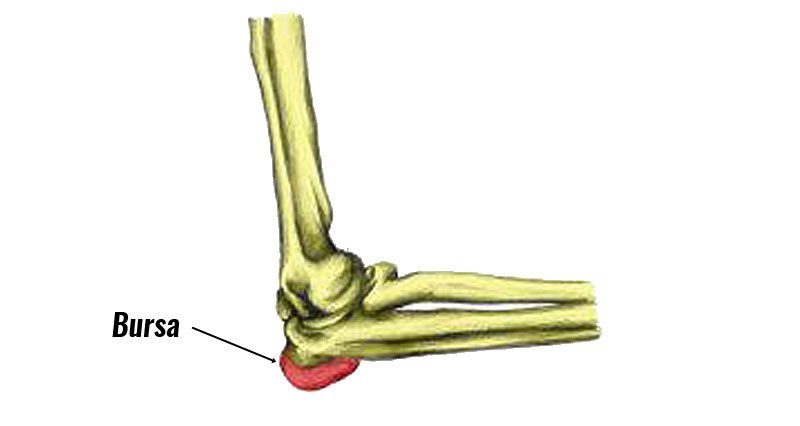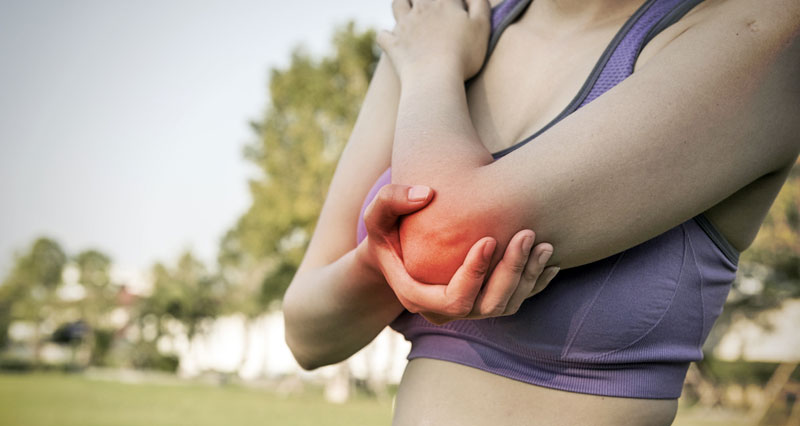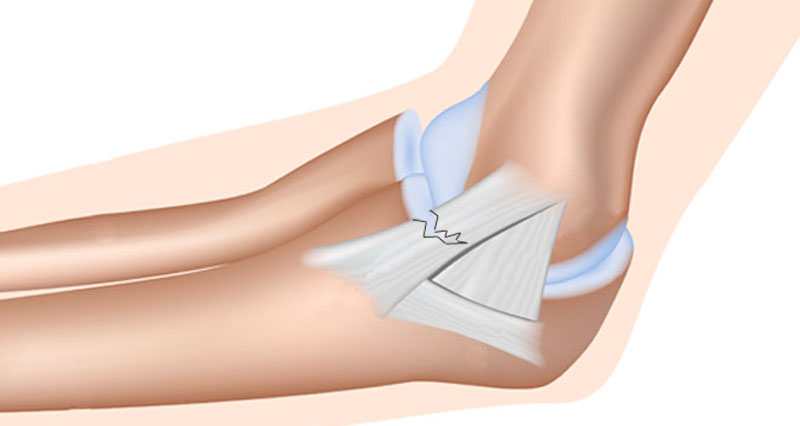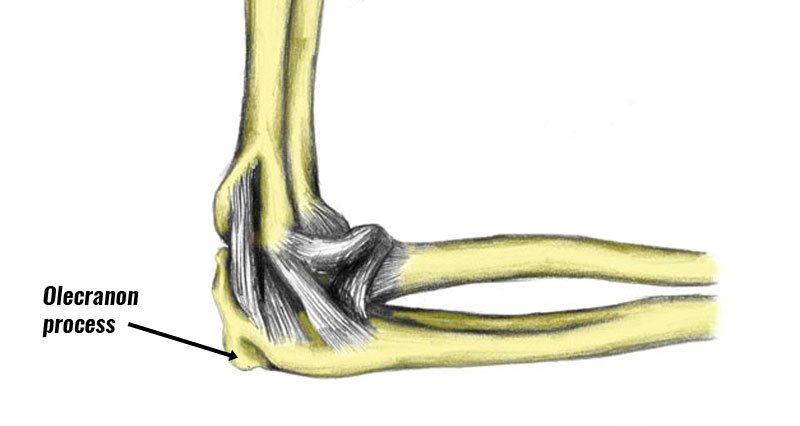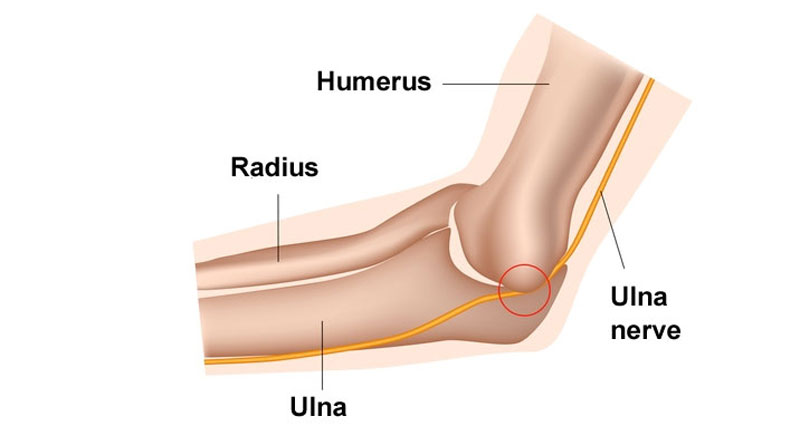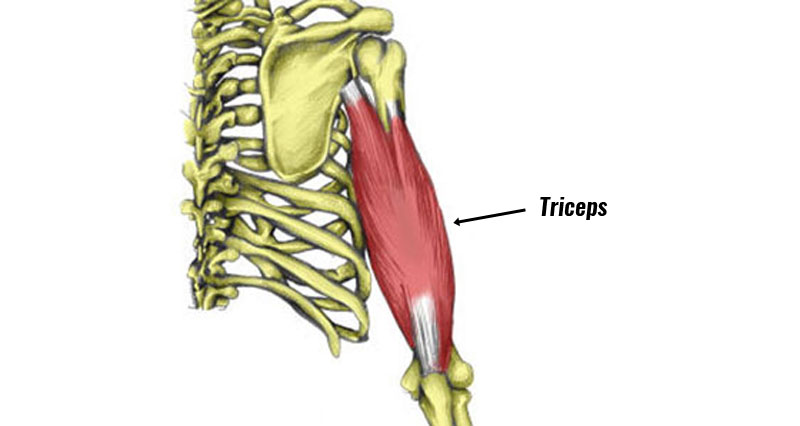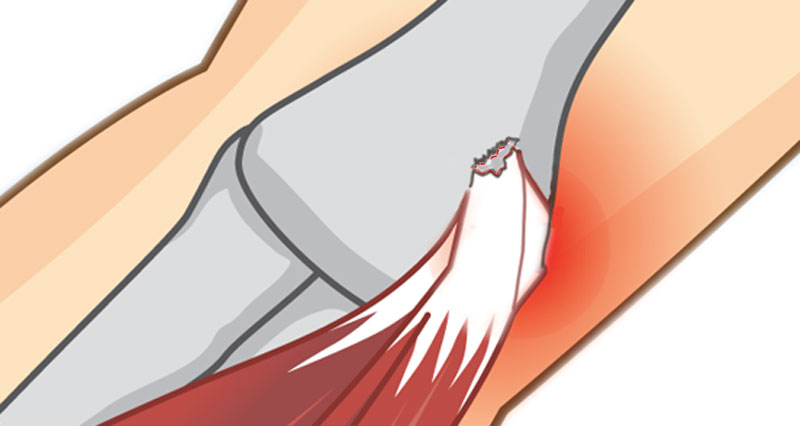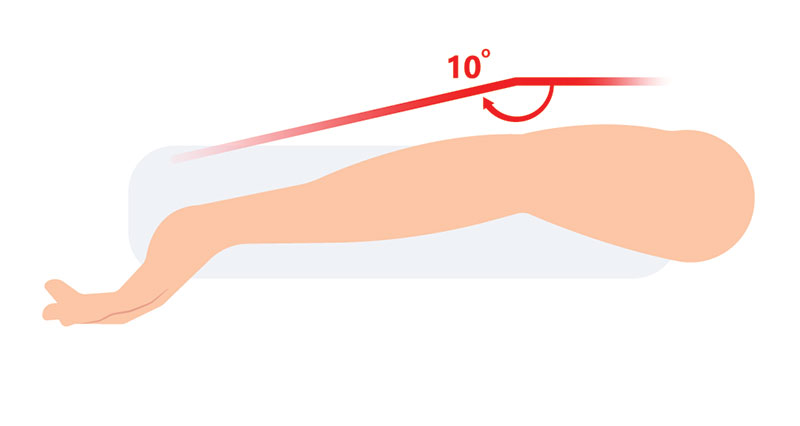Elbow bursitis, also known as Student’s elbow or Olecranon bursitis, is swelling and inflammation of the bursa at the back of the elbow. Here we explain the symptoms, causes, and treatment for elbow bursitis.
Symptoms
Symptoms may come on rapidly from direct trauma, or develop over time with repetitive stress.
- The most obvious sign is a painful swelling at the back of your elbow.
- You will be unable to place weight on your elbows, for example when resting them on a desk or table.
- If the bursa is infected, then your skin may appear red and feel warm.
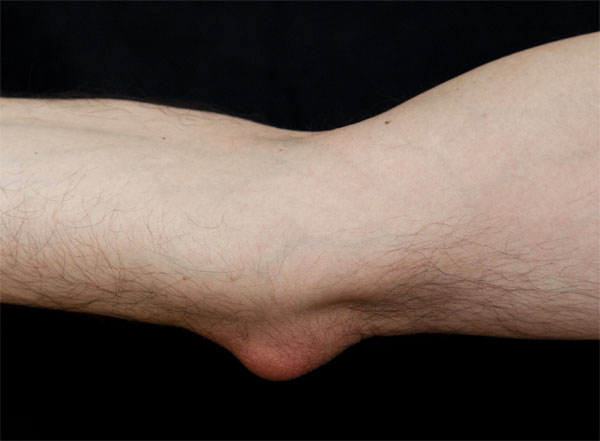
What is Elbow bursitis?
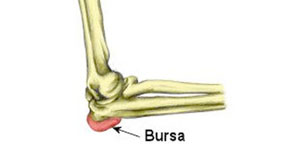
A bursa is a small sack of fluid found in joints. They are located between tendons and bones. The purpose of a bursa is to prevent friction between the tendon and bone which helps lubricate the movement.
Inflammation or bleeding into a bursa can cause it to become inflamed and painful. Olecranon bursitis is a medically accurate name, but it is also known as a student’s elbow. This is because repeatedly leaning on your elbows whilst studying may result in this injury.
What causes Elbow bursitis?
Direct impact can cause Olecranon bursitis. However, repeated minor trauma from leaning on your elbows also causes the bursa to become inflamed.
Wearing elbow pads or elbow guards helps prevent injury, especially in sports such as Cricket, Baseball or Football.
Treatment
Treatment involves reducing pain and inflammation whilst protecting your elbow.
Cold therapy
Rest and apply ice or cold therapy. The helps reduce pain and inflammation. Apply a cold compression wrap for 10 minutes every hour, or until the pain and swelling have gone down.
Elbow support
Wear a padded elbow support to protect the inflamed bursa, especially for activities where you put pressure on your elbow for long periods. Avoid leaning your elbows at a desk or table.
Medication
A doctor may recommend anti-inflammatory medication such as ibuprofen.
Aspirate
Aspirating the bursa is where your doctor inserts a needle into the bursa and sucks out the fluid.
Injections
In severe cases, your doctor may immobilize the arm or give a steroid injection.
Surgery for Elbow bursitis
If conservative treatment fails then you may need surgery to remove the bursa.
